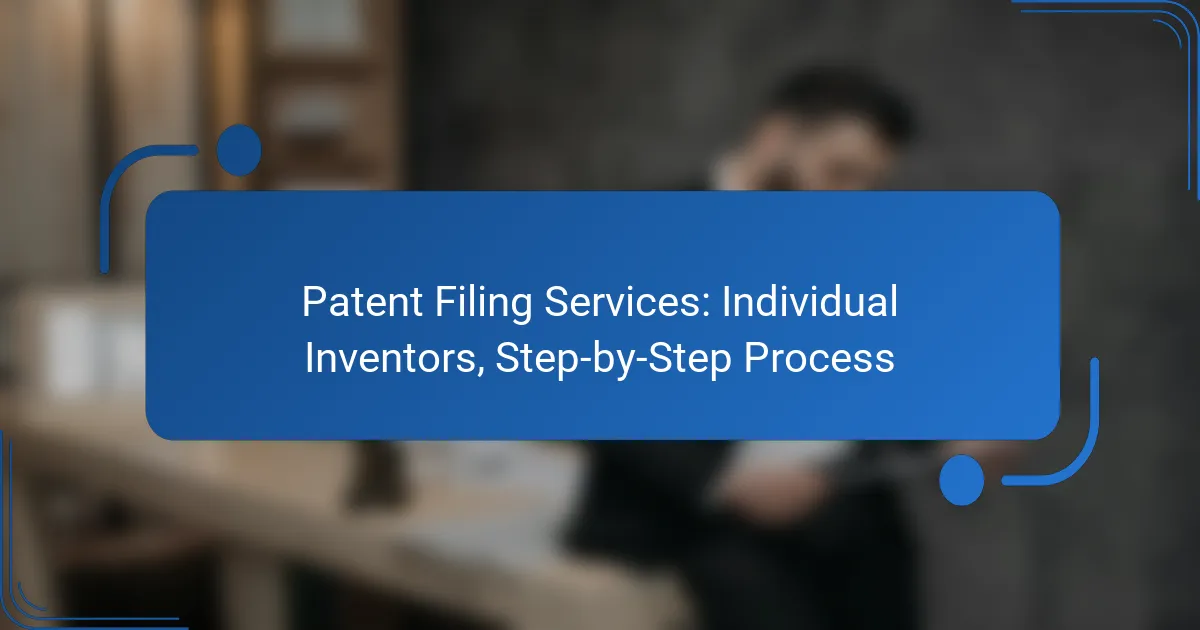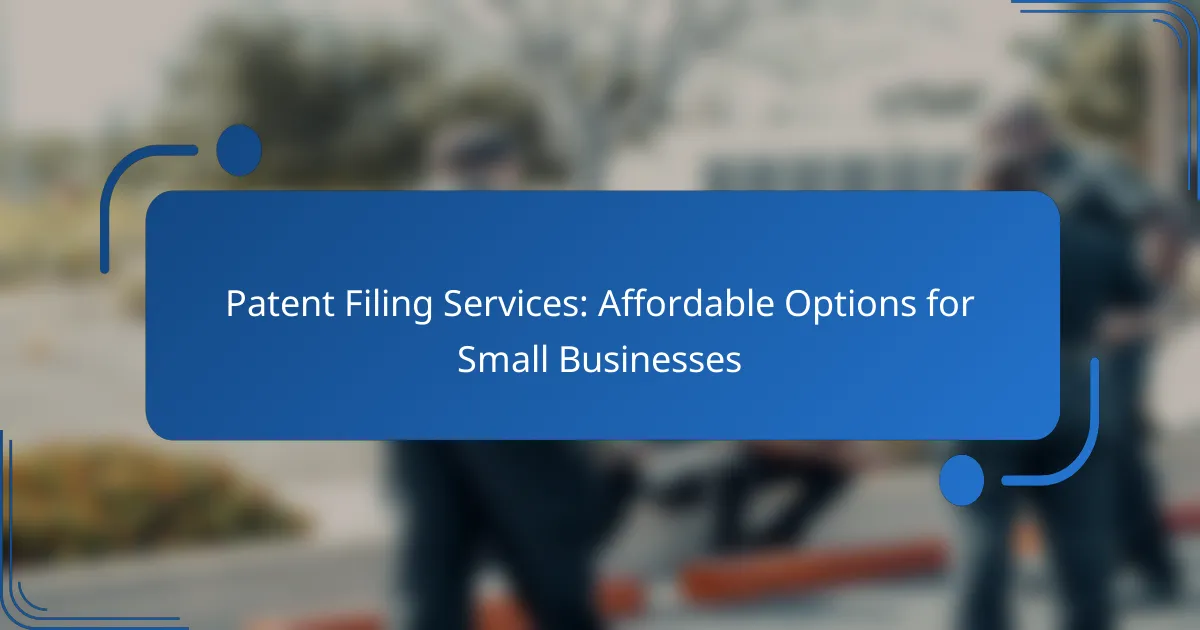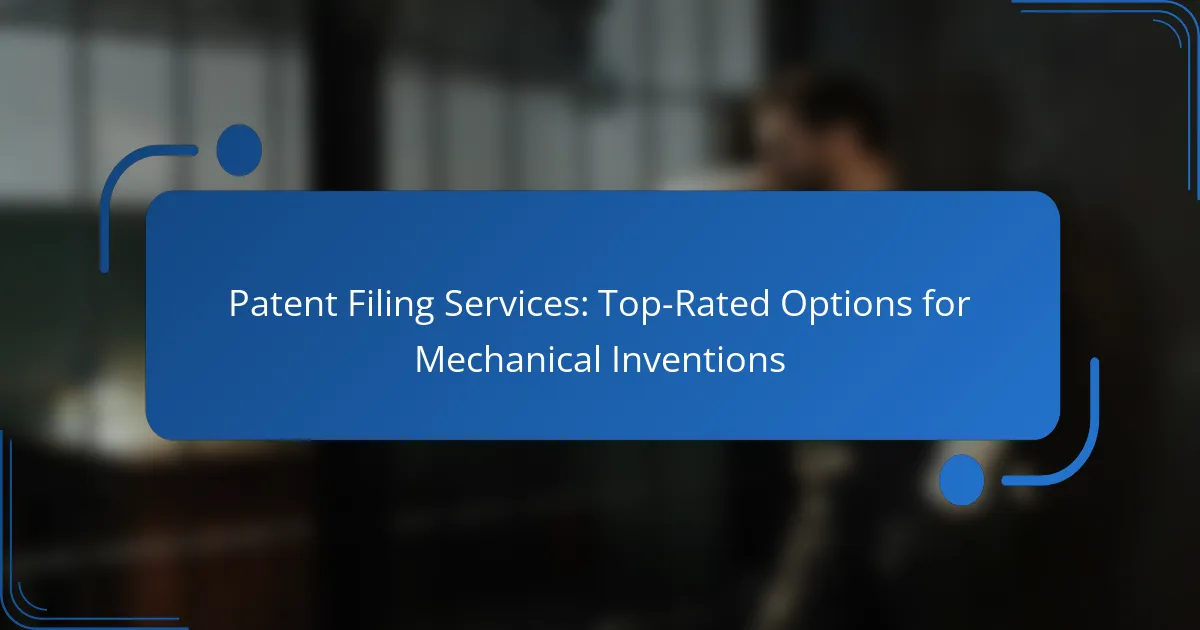Patent filing services offer individual inventors essential resources to protect their intellectual property. By navigating a structured process that includes research, documentation, and submission to the United States Patent and Trademark Office (USPTO), inventors can effectively secure their inventions. Understanding the associated costs and options for legal assistance is vital for a successful patent application.
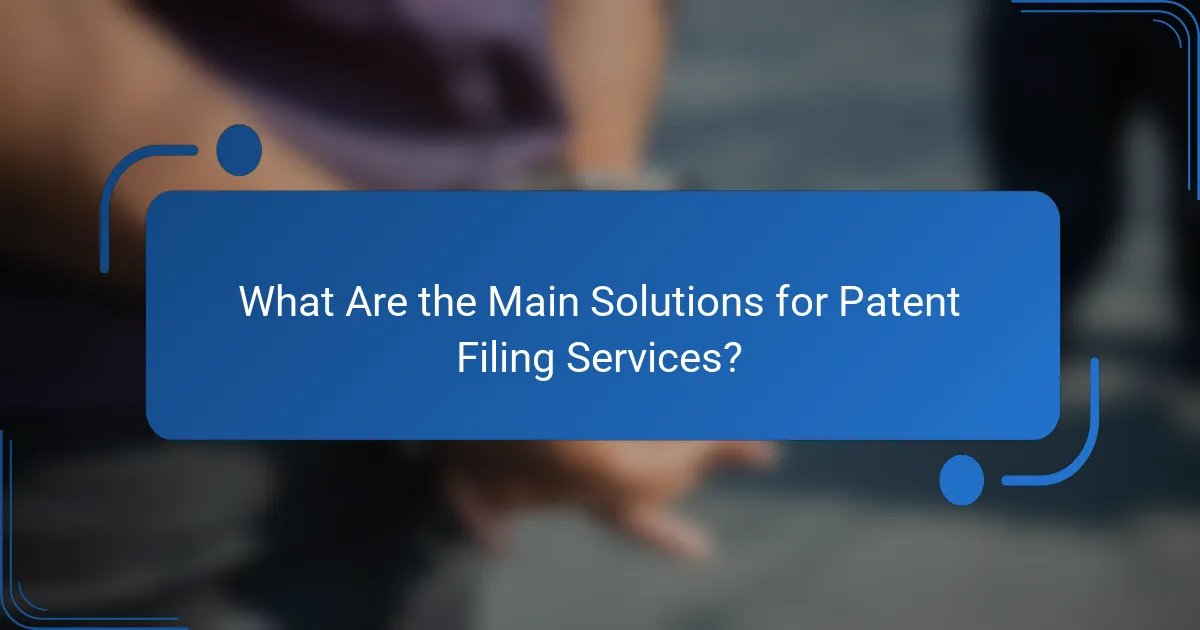
What Are the Main Solutions for Patent Filing Services?
Patent filing services provide various options for individual inventors to secure their intellectual property. These solutions range from online platforms to professional legal assistance, each catering to different needs and budgets.
Online Patent Filing Platforms
Online patent filing platforms offer a user-friendly way to submit patent applications without needing extensive legal knowledge. These services typically guide users through the process with step-by-step instructions and templates, making it accessible for individual inventors.
Examples include services like LegalZoom and PatentWizard, which allow users to file provisional and non-provisional patents at a fraction of the cost of hiring an attorney. However, it’s crucial to ensure that the platform complies with the relevant patent office regulations.
Patent Attorneys
Hiring a patent attorney is often the most comprehensive option for filing patents. These professionals provide expert guidance on patentability, drafting applications, and navigating the complexities of patent law. They can significantly increase the chances of a successful application.
While the cost of hiring a patent attorney can range from several hundred to several thousand dollars, their expertise can save time and avoid potential pitfalls in the filing process.
DIY Patent Filing Resources
Do-it-yourself (DIY) patent filing resources empower inventors to manage their applications independently. The United States Patent and Trademark Office (USPTO) provides extensive resources, including guides and forms, to assist individuals in filing their patents.
While this option can save money, it requires a solid understanding of patent law and the application process. Inventors should be cautious and thoroughly research to avoid common mistakes that could jeopardize their patents.
Patent Agent Services
Patent agents are licensed professionals who specialize in patent law but are not attorneys. They can help inventors prepare and file patent applications, often at lower rates than patent attorneys. This option is ideal for those who need expert assistance without the higher costs associated with legal representation.
Patent agents can provide valuable insights into the patent process and help navigate the intricacies of filing, making them a practical choice for many individual inventors.
Cost-Effective Filing Options
Cost-effective filing options are essential for individual inventors who may have limited budgets. Utilizing online platforms or patent agent services can significantly reduce costs compared to traditional patent attorneys. Additionally, filing a provisional patent application can be a strategic move, allowing inventors to secure their invention at a lower initial cost.
Inventors should also consider government fee waivers or reductions available for small entities, which can further alleviate financial burdens. Always compare the services offered to ensure the best value for your specific needs.
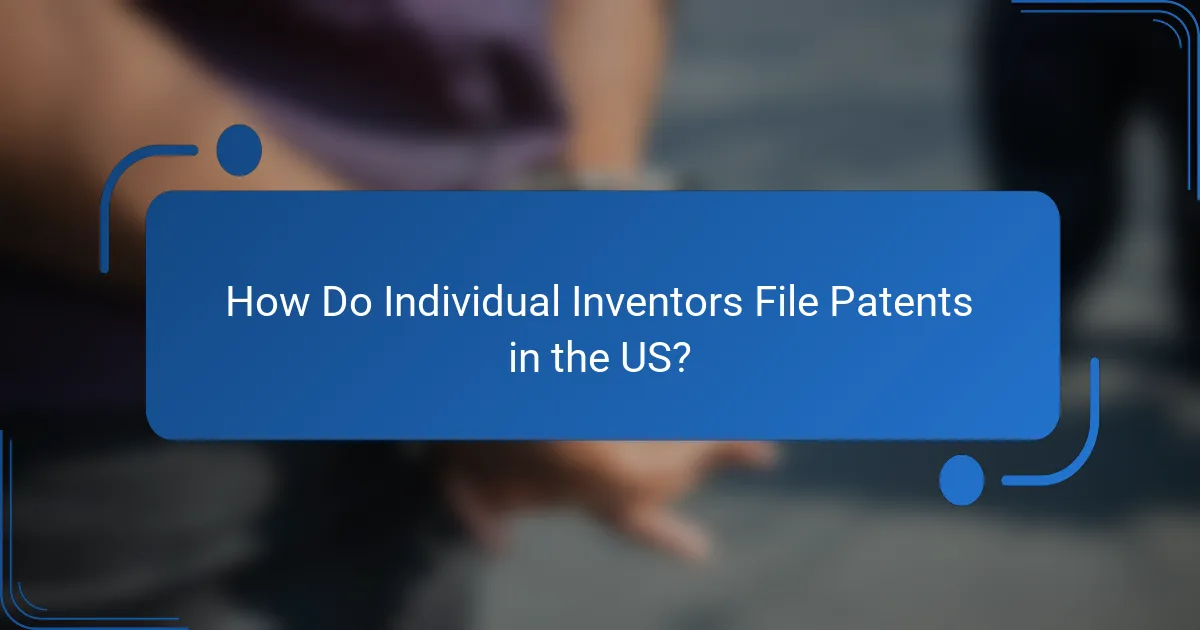
How Do Individual Inventors File Patents in the US?
Individual inventors can file patents in the US by following a structured process that involves research, documentation, and submission to the United States Patent and Trademark Office (USPTO). Understanding each step is crucial for protecting intellectual property effectively.
Step 1: Conduct a Patent Search
The first step for individual inventors is to conduct a patent search to determine if their invention is novel. This involves searching existing patents and published applications through the USPTO database or other patent databases. A thorough search can save time and resources by identifying potential conflicts early on.
Inventors can use keywords, classification codes, and other search tools to find relevant patents. If similar inventions exist, it may be necessary to modify the invention or seek a different approach to patentability.
Step 2: Prepare Patent Application
Preparing a patent application requires detailed documentation of the invention, including its functionality, design, and potential uses. Individual inventors should choose between a provisional application, which offers temporary protection, or a non-provisional application, which starts the formal examination process.
It’s essential to include claims that define the scope of protection sought. Clear and precise language will help in the examination process. Many inventors benefit from consulting a patent attorney to ensure that their application meets all legal requirements.
Step 3: Submit Application to USPTO
Once the patent application is prepared, it must be submitted to the USPTO, along with the required filing fee. The fees can vary based on the type of application and the size of the entity filing. Individual inventors often qualify for reduced fees under the small entity status.
Applications can be submitted electronically through the USPTO’s EFS-Web system, which streamlines the process and provides immediate confirmation of receipt. Proper submission is critical to avoid delays or rejections.
Step 4: Respond to Office Actions
After submission, the USPTO will review the application and may issue Office Actions, which are official communications regarding any issues with the application. Individual inventors must respond to these actions within a specified timeframe, addressing any concerns raised by the examiner.
Responses may involve amending claims, providing additional information, or arguing against rejections. Timely and thorough responses are vital to keep the application moving through the examination process.
Step 5: Maintain Patent Protection
Once a patent is granted, individual inventors must maintain their patent protection by paying maintenance fees at regular intervals. In the US, maintenance fees are due at 3.5, 7.5, and 11.5 years after the patent is granted.
Failure to pay these fees can result in the patent expiring. Inventors should keep track of these deadlines to ensure ongoing protection of their intellectual property rights.
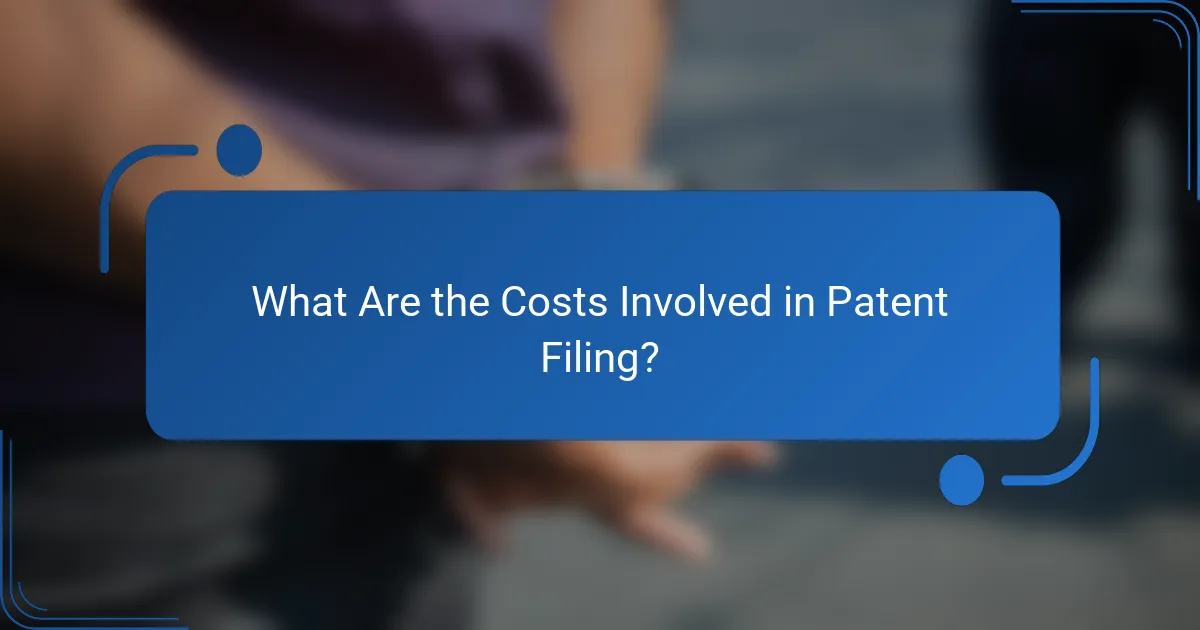
What Are the Costs Involved in Patent Filing?
The costs associated with patent filing can vary significantly based on several factors, including the type of patent, the complexity of the invention, and whether you hire legal assistance. Generally, inventors should budget for filing fees, attorney fees, maintenance fees, and potential additional costs for international patents.
Filing Fees
Filing fees are the charges imposed by the patent office to process your application. In the United States, these fees can range from a few hundred to several thousand dollars, depending on the type of patent (utility, design, or plant) and the size of the entity filing (individual, small business, or large corporation).
It’s essential to check the specific fee schedule of the relevant patent office, as these fees can change. For example, the U.S. Patent and Trademark Office (USPTO) provides a detailed fee structure on its website.
Attorney Fees
Hiring a patent attorney can significantly impact your overall costs. Attorney fees typically range from $150 to $500 per hour, depending on their experience and location. Many inventors find it beneficial to hire an attorney to navigate the complexities of patent law and ensure that their application is robust.
Some attorneys may offer flat-rate services for patent applications, which can help you budget more effectively. Be sure to discuss fees upfront and understand what services are included in the quoted price.
Maintenance Fees
Once your patent is granted, maintenance fees are required to keep it active. In the U.S., these fees are due at intervals of 3.5, 7.5, and 11.5 years after the patent is granted, with costs increasing over time. For example, the first maintenance fee might be around $1,600, while the last could exceed $7,000.
Failure to pay these fees can result in the expiration of your patent rights, so it’s crucial to keep track of these deadlines and budget accordingly.
Additional Costs for International Patents
Filing for patents internationally can incur additional costs, including translation fees, filing fees for each country, and potential attorney fees for foreign legal representation. The costs can add up quickly, often reaching tens of thousands of dollars depending on the number of countries involved.
Consider using the Patent Cooperation Treaty (PCT) process, which allows you to file a single international patent application that can later be converted into national applications in multiple countries. This can streamline the process and potentially reduce costs.
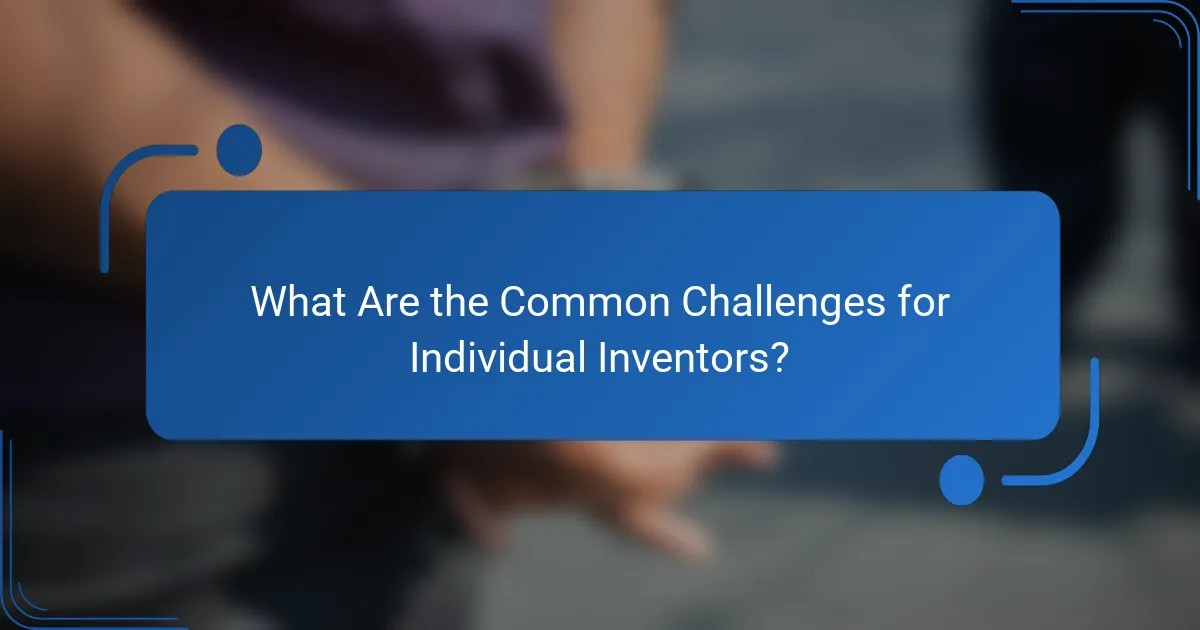
What Are the Common Challenges for Individual Inventors?
Individual inventors often face several challenges when navigating the patent filing process. These include understanding patent law, managing high costs, dealing with time-consuming procedures, and fulfilling complex documentation requirements.
Understanding Patent Law
Patent law can be intricate and varies significantly by country. Individual inventors must grasp key concepts such as patentability, types of patents, and the rights conferred by a patent. Familiarity with these legal aspects helps inventors make informed decisions about their inventions.
For example, in the United States, an invention must be novel, non-obvious, and useful to qualify for a patent. Understanding these criteria can prevent wasted time and resources on ideas that may not be patentable.
High Costs of Filing
The costs associated with patent filing can be substantial, often ranging from a few hundred to several thousand dollars. These expenses include filing fees, attorney fees, and maintenance fees. Individual inventors should budget accordingly and explore options for financial assistance or grants.
For instance, small entities in the U.S. may qualify for reduced fees, which can alleviate some financial burdens. It’s crucial to consider these costs early in the invention process to avoid surprises later on.
Time-Consuming Process
The patent application process can take a significant amount of time, often several months to years, depending on the complexity of the invention and the backlog at the patent office. Individual inventors should be prepared for a lengthy journey that may involve multiple rounds of communication with patent examiners.
To streamline the process, inventors can conduct thorough prior art searches and ensure their applications are complete and well-prepared before submission. This proactive approach can help minimize delays.
Complex Documentation Requirements
Filing a patent requires extensive documentation, including detailed descriptions, claims, and drawings. Individual inventors must ensure that their applications meet all legal requirements, which can be daunting without legal expertise. Incomplete or poorly drafted applications can lead to rejections or delays.
To navigate this complexity, inventors might consider hiring a patent attorney or using professional patent services. These experts can assist in preparing the necessary documents and ensuring compliance with all regulations, ultimately increasing the chances of a successful application.
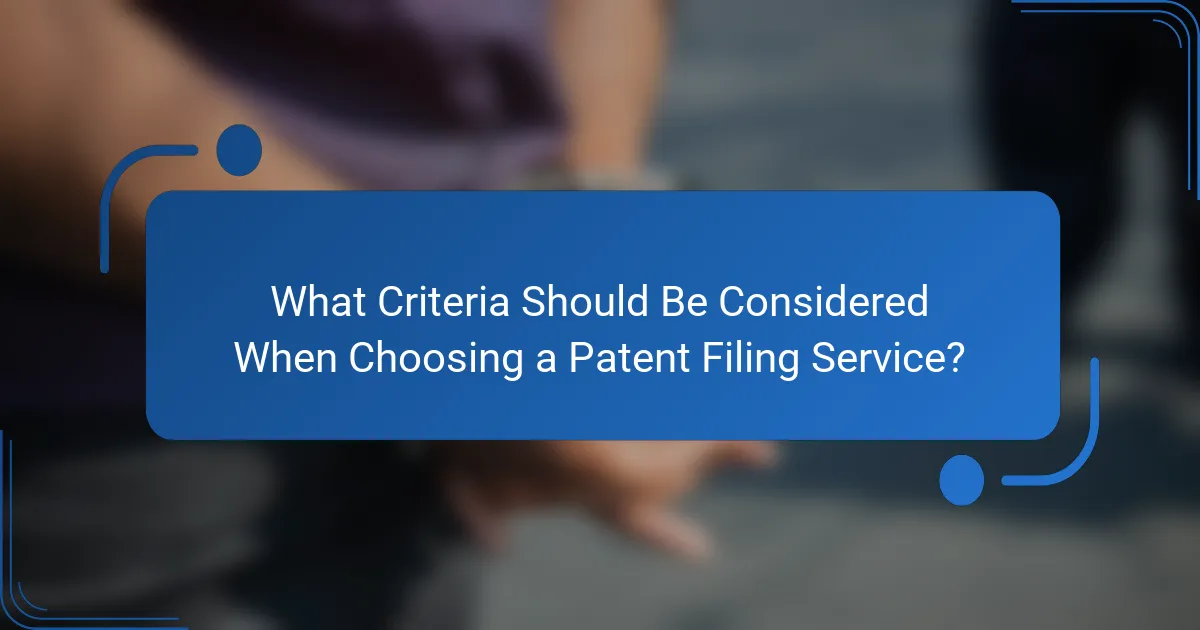
What Criteria Should Be Considered When Choosing a Patent Filing Service?
When selecting a patent filing service, consider factors such as expertise, cost, turnaround time, and customer support. A good service should have a proven track record in successfully filing patents and offer clear communication throughout the process.
Expertise and Experience
Choose a patent filing service with a strong background in intellectual property law and a history of successful patent applications. Look for services that employ registered patent attorneys or agents who understand the nuances of patent law and can navigate complex requirements.
Check the service’s experience in your specific industry or technology area, as familiarity with the field can significantly enhance the quality of the application. A firm with relevant expertise can better anticipate challenges and tailor the application to meet specific standards.
Cost and Value
Evaluate the pricing structure of different patent filing services to ensure it aligns with your budget. Costs can vary widely, often ranging from a few hundred to several thousand dollars, depending on the complexity of the patent and the service level provided.
Consider not only the upfront costs but also the value offered. A higher price may be justified by better quality, faster processing times, or additional services such as patent searches or legal consultations.
Turnaround Time
Turnaround time is crucial when filing a patent, as delays can affect your intellectual property rights. Assess the average processing times of various services, which can range from a few weeks to several months.
Inquire about their workflow and how they handle urgent requests. Some services may offer expedited options for an additional fee, which can be beneficial if you need to secure your invention quickly.
Customer Support
Effective customer support is essential for a smooth patent filing experience. Look for services that provide clear communication channels, such as phone, email, or live chat, and ensure they are responsive to inquiries.
Read reviews or testimonials to gauge the level of support other clients have received. A service that prioritizes customer care can make the complex patent process more manageable and less stressful.
